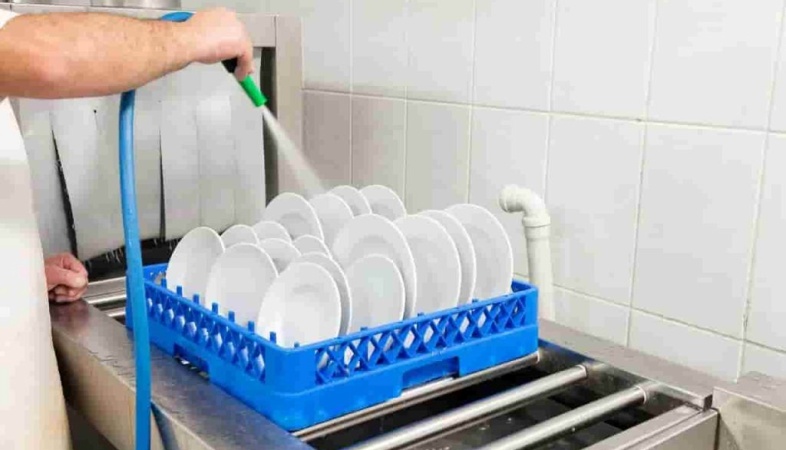Organizing Food in Shelves: Maximizing Efficiency in Commercial Kitchens
A well-organized shelving system not only improves workflow but also enhances food safety, inventory management, and overall productivity.

In the fast-paced environment of a commercial kitchen,
efficiency is paramount. One often-overlooked aspect of kitchen organization
that can significantly impact efficiency is the arrangement of food items on
shelves. A well-organized shelving system not only improves workflow but also
enhances food safety, inventory management, and overall productivity. We’ll now
explore the importance of organizing food in shelves in commercial kitchens and
provide practical tips for maximizing efficiency.
1. Categorize by Food Type:
- One of the most effective ways to organize food shelves is by categorizing items based on their type. For example, designate separate shelves for dry goods, canned goods, perishable items, spices, condiments, and cleaning supplies.
- By grouping similar items together, kitchen staff can quickly locate ingredients when needed, reducing the time spent searching for items and streamlining the cooking process.
2. FIFO (First In, First Out):
- Implementing a FIFO system is essential for maintaining food freshness and minimizing waste in commercial kitchens. Arrange food items on shelves so that older products are placed at the front and newer items are placed behind them.
- This ensures that older inventory is used first, reducing the risk of spoilage and food waste. It also helps prevent stockpiling of ingredients, which can lead to inventory discrepancies and increased costs.
3. Consider Workflow:
- When organizing food shelves, consider the workflow of the kitchen and the frequency of use for different items. Place frequently used ingredients and utensils within easy reach of cooking stations to minimize unnecessary movement and improve efficiency.
- Reserve lower shelves for heavier items and bulk storage containers to reduce the risk of injury from lifting and carrying heavy loads. Keep lighter items and frequently accessed ingredients at eye level or within arm's reach for convenience.
4. Labeling and Rotation:
- Proper labeling is essential for ensuring food safety and preventing cross-contamination in commercial kitchens. Label all food items with their name, date of preparation or receipt, and expiry date.
- Use color-coded labels or tags to indicate different categories of food items, such as raw, cooked, allergen-free, or vegetarian. Regularly inspect shelves for expired or spoiled items and remove them promptly to maintain food quality and safety.
5. Utilize Vertical Space:
- Make the most of vertical space by installing adjustable shelving units or adding additional shelves to existing units. Use shelf dividers, risers, and storage bins to maximize space and keep items organized.
- Store infrequently used or seasonal items on higher shelves, with a sturdy step stool or ladder available for easy access when needed. Keep heavy or bulky items on lower shelves to minimize the risk of injury from reaching or lifting.
6. Clean and Maintain Regularly:
- Regular cleaning and maintenance of food shelves are essential for ensuring food safety and preventing contamination. Establish a cleaning schedule for shelves and storage areas, including regular dusting, wiping, and sanitizing.
- Inspect shelves for signs of damage or wear and tear, such as rust, corrosion, or loose bolts, and repair or replace damaged shelves as needed. Encourage kitchen staff to keep shelves clean and organized at all times to maintain a tidy and efficient workspace.
Organizing food in shelves is a critical aspect of maximizing efficiency and productivity in commercial kitchens. By categorizing items, implementing a FIFO system, considering workflow, labeling and rotation, utilizing vertical space, and maintaining cleanliness, kitchen staff can create a well-organized and efficient storage system that enhances food safety, inventory management, and overall productivity.
.png)
















.jpg)











